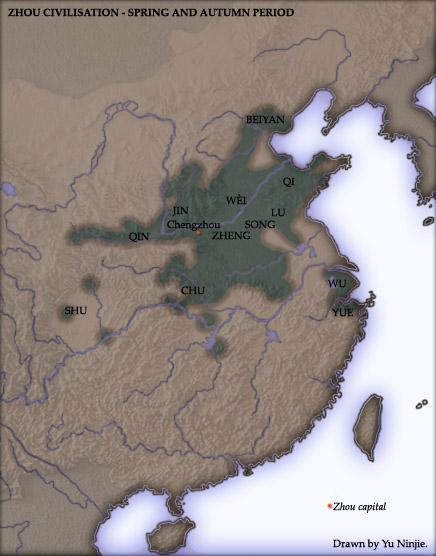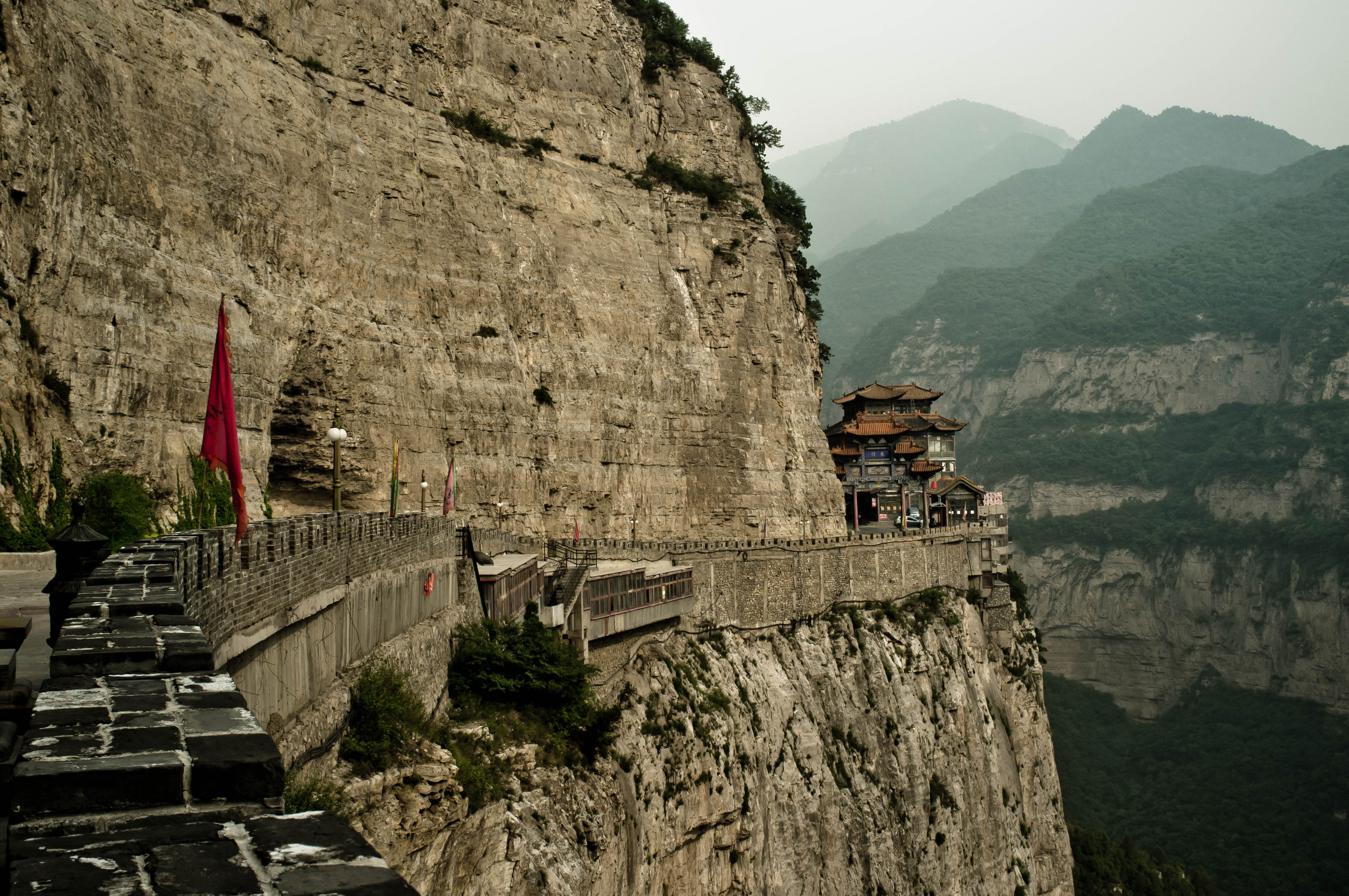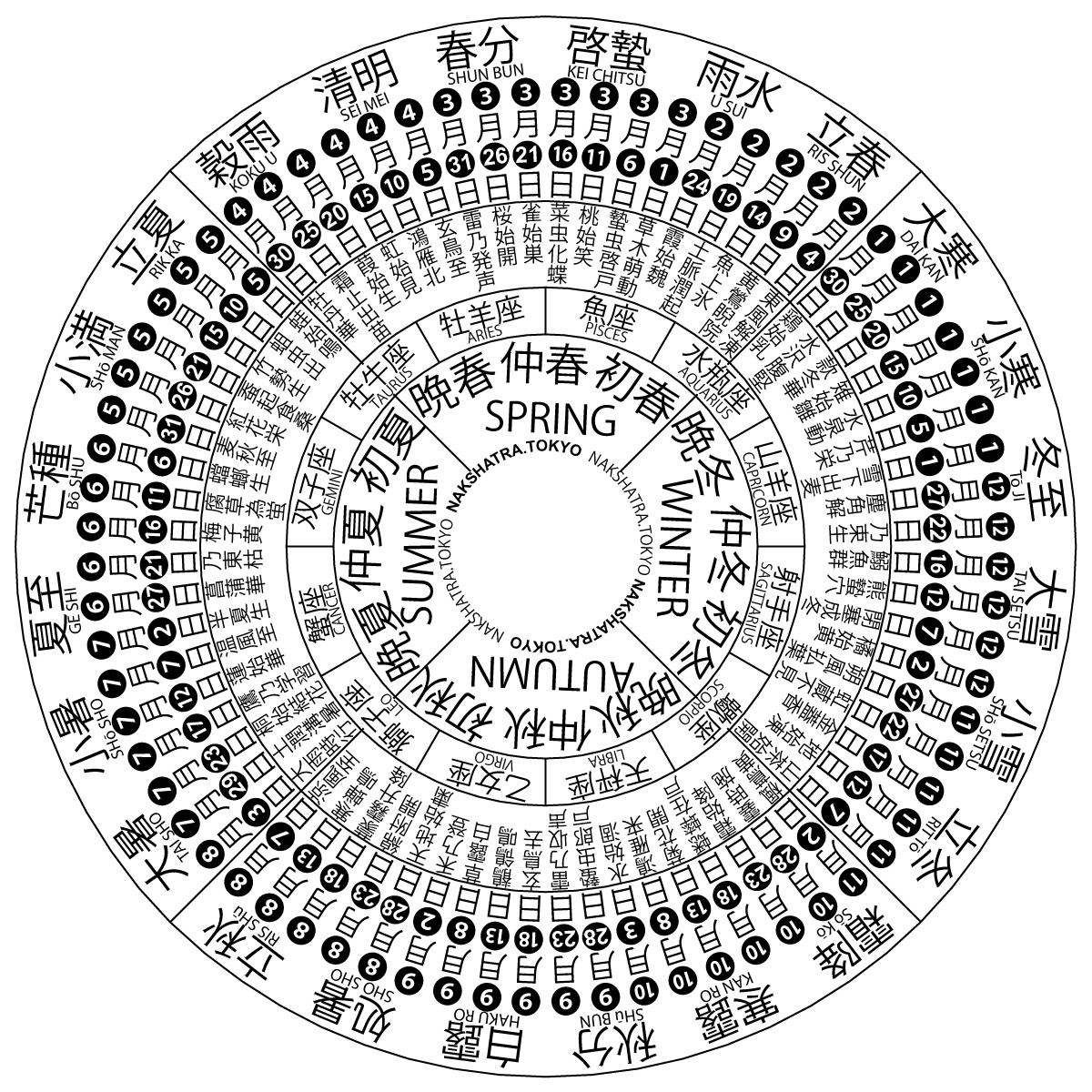|
Qingming
The Qingming festival or Ching Ming Festival, also known as Tomb-Sweeping Day in English (sometimes also called Chinese Memorial Day or Ancestors' Day), is a traditional Chinese festival observed by the Han Chinese of mainland China, Hong Kong, and Macau, and by the ethnic Chinese of Taiwan, Malaysia, Singapore, Cambodia, Indonesia, Philippines, Thailand, Vietnam and Panama. It falls on the first day of the fifth solar term of the traditional Chinese lunisolar calendar. This makes it the 15th day after the Spring Equinox, either 4, 5 or 6 April in a given year. During Qingming, Chinese families visit the tombs of their ancestors to clean the gravesites, pray to their ancestors and make ritual offerings. Offerings would typically include traditional food dishes and the burning of joss sticks and joss paper. The holiday recognizes the traditional reverence of one's ancestors in Chinese culture. The Qingming Festival has been observed by the Chinese for over 2500 years, altho ... [...More Info...] [...Related Items...] OR: [Wikipedia] [Google] [Baidu] |
Cold Food Festival
The Cold Food or Hanshi Festival is a traditional Chinese holiday which developed from the local commemoration of the death of the Jin nobleman Jie Zitui in the 7thcenturyBC under the Zhou dynasty, into an occasion across East Asia for the commemoration and veneration of ancestors by the 7th-century Tang dynasty. Its name derives from the tradition of avoiding the lighting of any kind of fire, even for the preparation of food. This practice originally occurred at midwinter for as long as a month, but the hardship this involved led to repeated attempts to ban its observance out of concern for its practitioners. By the end of the Three Kingdoms Period (3rd century), it was limited to three days in the spring around the Qingming solar term. Under the Tang, ancestral observance was limited to the single day which is now the Tomb-Sweeping Festival. The Tomb-Sweeping Festival is a official holiday in several countries, and the Cold Food Festival which stretches either side of it co ... [...More Info...] [...Related Items...] OR: [Wikipedia] [Google] [Baidu] |
Jie Zitui
Jie Zhitui (centuryBC), also known as Jie Zitui, was a Han aristocrat who served the Jin prince Chong'er during the Spring and Autumn Period of Chinese history. Chinese legend holds that when Chong'er finally ascended to power as the duke of Jin ("Duke Wen"), Jie either refused or was passed over for any reward, despite his great loyalty during the prince's times of hardship. Jie then retired to the forests of Jin in what is now central Shanxi with his mother. Supposedly, the duke so desired to repay Jie's years of loyalty that, when Jie declined to present himself at court, he ordered a forest fire to compel the recluse out of hiding. Instead, Jie and his mother were killed by the fire on . By the Han, Jie was being revered in central Shanxi as a Taoist immortal. He was annually commemorated with a ritual avoidance of fire that, despite many official bans, eventually became China's Cold Food and Qingming Festivals. Names Jie Zhitui or Jiezhi Tui is the name given to him in t ... [...More Info...] [...Related Items...] OR: [Wikipedia] [Google] [Baidu] |
Qingtuan
''Qīngtuán'' ( 青糰) or ''Tsingtuan'' is a form of dumpling that is green, originating from Jiangnan but common throughout China. It is made of glutinous rice mixed with Chinese mugwort or barley grass. This is then usually filled with sweet red or black bean paste. The exact technique for making ''qingtuan'' is quite complicated and the grass involved is only edible in the early spring, so it is typically only available around the time of the Qingming Festival , with which the dumpling has become associated. Nowadays, Qīngtuán sold in most convenience stores in China are made of glutinous rice mixed with matcha. It also has more diverse fillings, such as rousong or salted egg yolk. Much of the ''qingtuan'' consumed in China is prepared and consumed as street food from local vendors. Origin The tradition of eating qingtuan at Qingming Festival evolved from the ancient Chinese Cold Food Day (one or two days before Qingming Festival). The custom on Cold Food Day is tha ... [...More Info...] [...Related Items...] OR: [Wikipedia] [Google] [Baidu] |
Public Holidays In China
There are currently seven official public holidays in mainland China. Each year's holidays are announced about three weeks before the start of the year by the General Office of the State Council. A notable feature of mainland Chinese holidays is that weekends are usually swapped with the weekdays next to the actual holiday to create a longer holiday period. History Festivals in China have been around since the Qin Dynasty around 221-206 BC. During the more prosperous Tang Dynasty from AD 618–907, festivals involved less sacrifice and mystery to more entertainment. Culminating to the modern era Between the 1920s until around the 1970s, the Chinese began observing two sets of holidays, which were the traditional and what became "official", celebrating the accomplishments of the communist regime. There was then a major reform in 2008, abolishing the Labour Day Golden Week and adding three traditional Chinese holidays (Qingming Festival, Duanwu Festival, and Mid-Autumn Festival) ... [...More Info...] [...Related Items...] OR: [Wikipedia] [Google] [Baidu] |
Prince Chong'er
Duke Wen of Jin (697–628BC), born Chong'er (literally "Double Ears"), was a scion of the royal house of Jin during the Spring and Autumn Period of Chinese history. He famously endured a long period of exile from his realm before finally being restored to power (r.636–628BC) and rapidly leading Jin to hegemony over the other Chinese states of his time. He is a figure in numerous Chinese legends, including those about his loyal courtier Jie Zhitui, whose death is said to have inspired China's Cold Food and Qingming Festivals. Names "Duke Wen of Jin" is a posthumous name bestowed on him as part of his family's ancestral veneration. It literally means the "Cultured Duke of Jin". Duke Wen's given name was Chong'er. His clan name was Ji. Life Early life Prince Chong'er was born to Duke Xian of Jin in 697 BC. The '' Zuo Zhuan'' notes that "his ribs were all grown together," a sign of strength and leadership. Chong'er's half-brothers included Shensheng and Xiqi. While Shens ... [...More Info...] [...Related Items...] OR: [Wikipedia] [Google] [Baidu] |
List Of Observances Set By The Chinese Calendar
The traditional Chinese holidays are an essential part of harvests or prayer offerings. The most important Chinese holiday is the Chinese New Year (Spring Festival), which is also celebrated in overseas ethnic Chinese communities (for example in Malaysia, Thailand or the USA). Traditional holidays are varied from region to region but all scheduled according to the Chinese calendar (except the Qing Ming and Winter Solstice days, falling on the respective ''Jie qi'' in the Agricultural calendar). Public holidays Traditional holidays are generally celebrated in Chinese-speaking regions. For the most part however, only Chinese New Year, Qingming Festival, the Dragon Boat Festival and Mid-Autumn Festival are statutory public holidays. This is the case in both mainland China and Taiwan whilst Hong Kong and Macau also observe Buddha's Birthday and Chung Yeung Festival. In Singapore, Chinese New Year is the only traditional Chinese public holiday, likewise with Malaysia. Each regi ... [...More Info...] [...Related Items...] OR: [Wikipedia] [Google] [Baidu] |
Caozaiguo
''Chhau-a-koe'' is a type of kuih with a sweet dough made with glutinous rice flour, sugar, and a ground cooked paste of Jersey cudweed or Chinese mugwort. The herbs give the dough and the finished kuih a unique flavor and brownish green color. The kuih is found in Fujian, Hakka, and Taiwanese cuisine. Chhau-a-koe is usually made in Qingming Festival as a celebratory food item. Although the kuih can be made from either herb, Chinese mugwort is more commonly used in making Hakka-style caozaiguo. The herb-flavored dough is commonly filled with ground meat, dried white radish, or sweet bean pastes. In Taiwan, a filling consisting of Dried shrimp, shiitake mushrooms, dried and shredded white radish (), and deep-fried shallots is commonly used. See also * Qingtuan, the Jiangnan form of this dish * Kusamochi, the Japanese form of this dish * Songpyeon ''Songpyeon'' (, 松䭏) is a traditional Korean food made of rice powder. It is a type of ''tteok'', small rice cakes, tradit ... [...More Info...] [...Related Items...] OR: [Wikipedia] [Google] [Baidu] |
Han Chinese
The Han Chinese () or Han people (), are an East Asian ethnic group native to China. They constitute the world's largest ethnic group, making up about 18% of the global population and consisting of various subgroups speaking distinctive varieties of the Chinese language. The estimated 1.4 billion Han Chinese people, worldwide, are primarily concentrated in the People's Republic of China (including Mainland China, Hong Kong and Macau) where they make up about 92% of the total population. In the Republic of China (Taiwan), they make up about 97% of the population. People of Han Chinese descent also make up around 75% of the total population of Singapore. Originating from Northern China, the Han Chinese trace their cultural ancestry to the Huaxia, the confederation of agricultural tribes living along the Yellow River. This collective Neolithic confederation included agricultural tribes Hua and Xia, hence the name. They settled along the Central Plains around the middle and lo ... [...More Info...] [...Related Items...] OR: [Wikipedia] [Google] [Baidu] |
Lunisolar Calendar
A lunisolar calendar is a calendar in many cultures, combining lunar calendars and solar calendars. The date of Lunisolar calendars therefore indicates both the Moon phase and the time of the solar year, that is the position of the Sun in the Earth's sky. If the sidereal year (such as in a sidereal solar calendar) is used instead of the solar year, then the calendar will predict the constellation near which the full moon may occur. As with all calendars which divide the year into months there is an additional requirement that the year have a whole number of months. In this case ordinary years consist of twelve months but every second or third year is an embolismic month, embolismic year, which adds a thirteenth Intercalation (timekeeping), intercalary, embolismic, or leap month. Their months are based on the regular cycle of the Moon's lunar phase, phases. So lunisolar calendars are lunar calendars with – in contrast to them – additional Intercalation (timekeeping), inter ... [...More Info...] [...Related Items...] OR: [Wikipedia] [Google] [Baidu] |
Solar Term
A solar term is any of twenty-four periods in traditional Chinese lunisolar calendars that matches a particular astronomical event or signifies some natural phenomenon. The points are spaced 15° apart along the ecliptic and are used by lunisolar calendars to stay synchronized with the seasons, which is crucial for agrarian societies. The solar terms are also used to calculate intercalary months; which month is repeated depends on the position of the sun at the time. According to the '' Book of Documents'', the first determined term was Dongzhi (Winter Solstice) by Dan, the Duke of Zhou, while he was trying to locate the geological center of the Western Zhou dynasty, by measuring the length of the sun's shadow on an ancient timekeeper instrument named Tu Gui (土圭). Then four terms of seasons were set, which were soon evolved as eight terms; until 104 BC in the book Taichu Calendar, the entire twenty-four solar terms were officially included in the Chinese calendar. Because ... [...More Info...] [...Related Items...] OR: [Wikipedia] [Google] [Baidu] |
Ancestral Veneration In China
Chinese ancestor veneration, also called Chinese ancestor worship, is an aspect of the Chinese traditional religion which revolves around the ritual celebration of the deified ancestors and tutelary deities of people with the same surname organised into lineage societies in ancestral shrines. Ancestors, their ghosts, or spirits, and gods are considered part of "this world". They are neither supernatural (in the sense of being outside nature) nor transcendent in the sense of being beyond nature. The ancestors are humans who have become godly beings, beings who keep their individual identities. For this reason, Chinese religion is founded on veneration of ancestors. Ancestors are believed to be a means of connection to the supreme power of Tian as they are considered embodiments or reproducers of the creative order of Heaven. It is a major aspect of Han Chinese religion, but the custom has also spread to ethnic minority groups. Ancestor veneration is largely focused on male ance ... [...More Info...] [...Related Items...] OR: [Wikipedia] [Google] [Baidu] |
Public Holidays In Taiwan
The following are considered holidays in Taiwan. Some are official holidays, some are not: Table of Taiwan holidays Public holidays Unofficial holidays The following holidays are also observed on Taiwan, but are not official holidays observed by civil servants of the central government. Some sectors of the workforce may have time off on some of the following holidays such as Labor Day, Armed Forces Day, and Teachers' Day. Before 1949, a number of public holidays were celebrated by certain ethnic minorities in regions within the ROC, which were decided by local governments and entities. Since 1949, these holidays continued to be celebrated by ethnic groups as such in Taiwan Area only. See also * Traditional Chinese holidays * Public holidays in China References External links Holidays and Festivals in Taiwan {{DEFAULTSORT:Public Holidays in the Republic Of China Taiwan Taiwan, officially the Republic of China (ROC), is a country in East Asia, at the ju ... [...More Info...] [...Related Items...] OR: [Wikipedia] [Google] [Baidu] |


.jpg)

